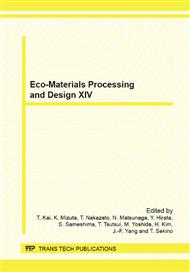p.125
p.131
p.135
p.141
p.147
p.151
p.157
p.161
p.165
Effect of Pore Forming Agent on Microstructures and Properties of Porous Molybdenum
Abstract:
The porous molybdenum was prepared by addition of pore forming agent and powder metallurgy method. The results show that the species and amount of pore forming agent are the primary influencing factors for the microstructures and properties of porous molybdenum. The pore shapes in porous molybdenum are regular and uniformly distributed. The porosity of porous molybdenum would be the largest and the transmission rate would be the best when sodium chloride was selected as pore forming agent. The compressive fracture strength of porous molybdenum would be more than 30MPa when the ammonium hydrogen carbonate was selected as pore formimg agent and its addition was 70 % (volume fraction). But the porosity would be the lowest.
Info:
Periodical:
Pages:
157-160
Citation:
Online since:
July 2013
Authors:
Keywords:
Price:
Сopyright:
© 2013 Trans Tech Publications Ltd. All Rights Reserved
Share:
Citation:


